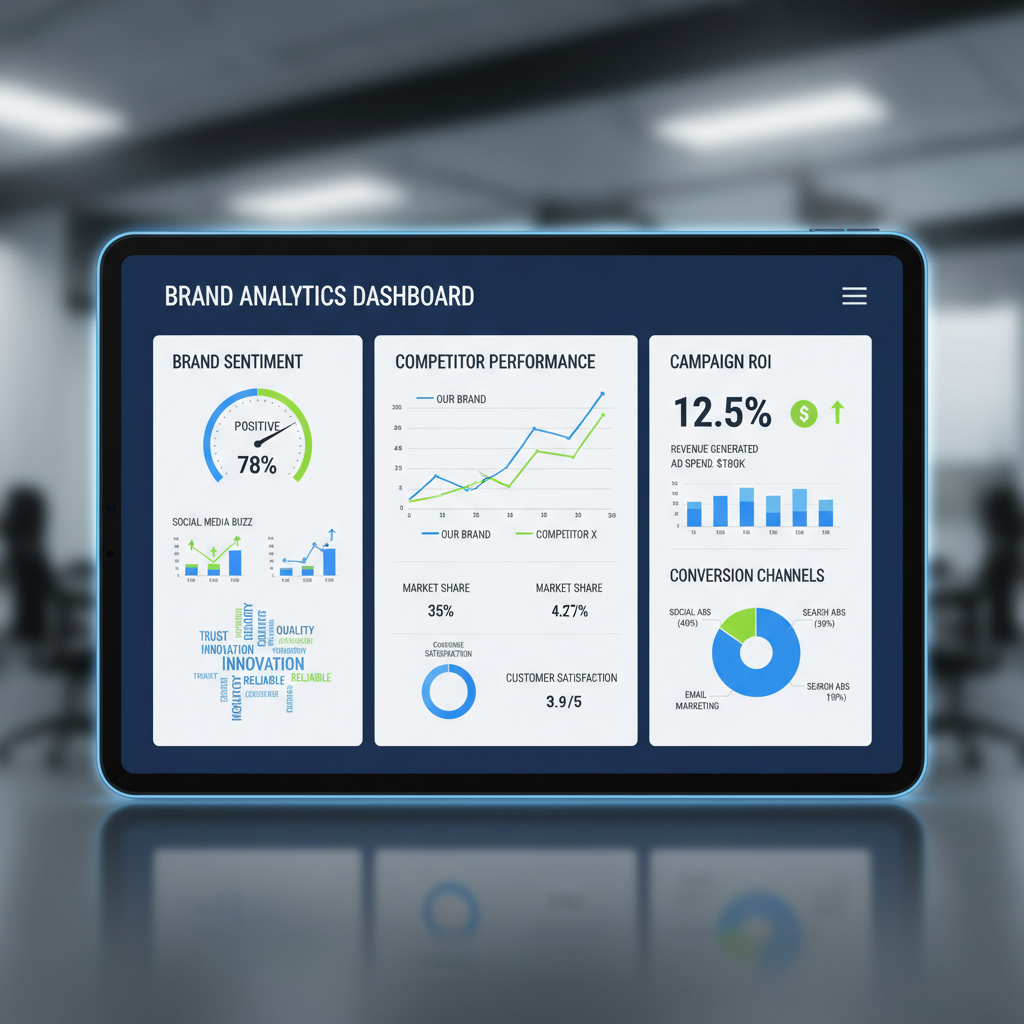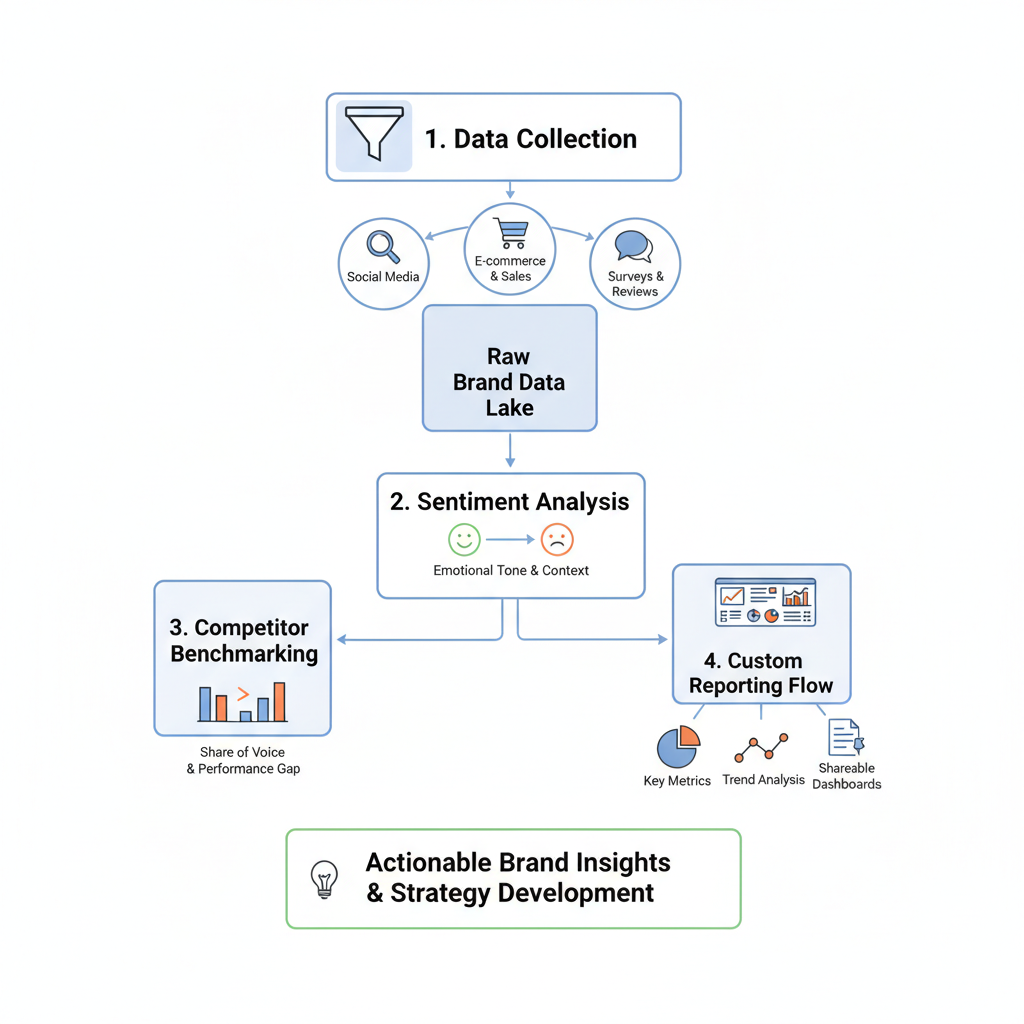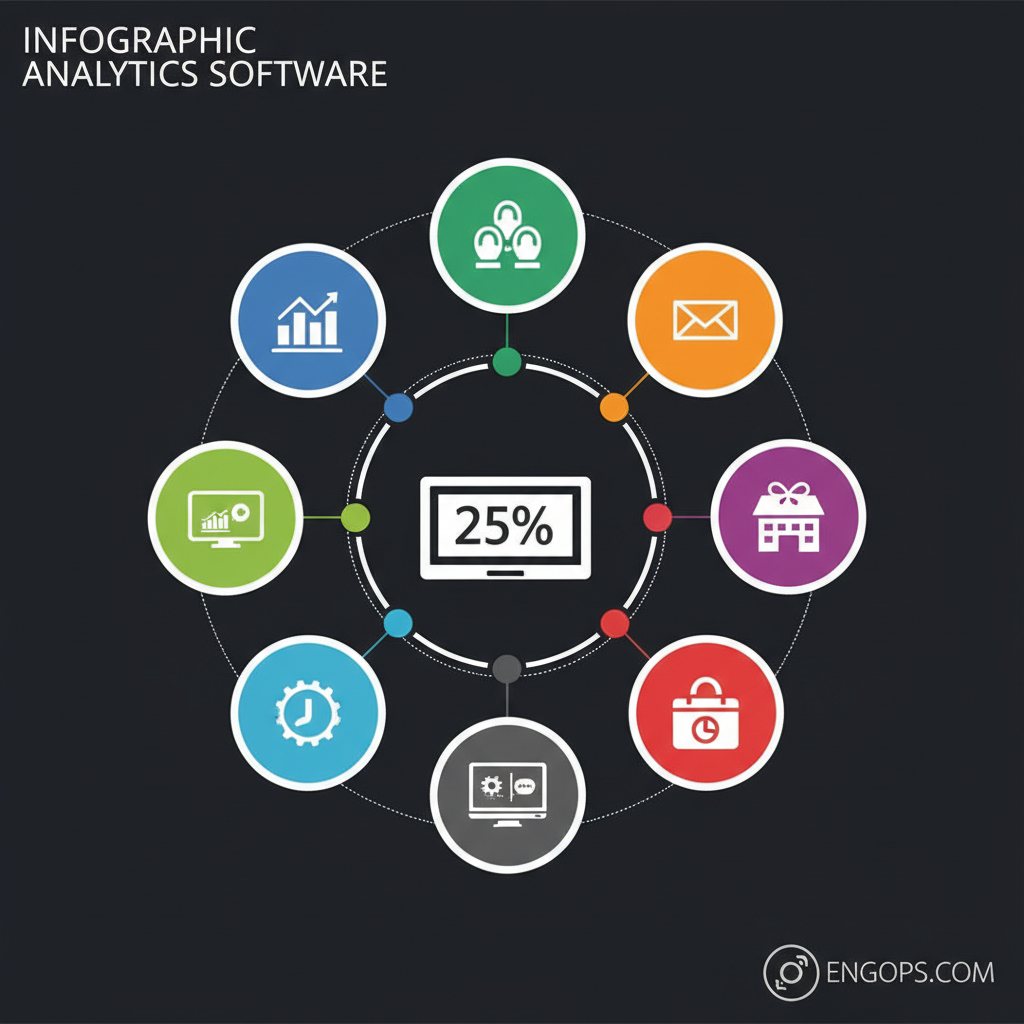Top Brand Analytics Software for Modern Marketing Strategies
Discover top brand analytics software with features like real-time tracking, sentiment analysis, and competitor benchmarking for modern marketing success.

Introduction to Brand Analytics Software
Brand analytics software is essential for businesses looking to understand and optimize brand perception in today's competitive, digital-first marketplace. By aggregating information from diverse sources such as social media, online reviews, and news coverage, these tools transform raw data into actionable insights that guide strategy, enhance customer loyalty, and protect brand reputation. This guide will explore the key functions, features, comparisons, and best practices to help you choose and implement the right brand analytics solution for your needs.
---
Understanding Brand Analytics Software and Its Core Functions
Brand analytics software provides a unified platform for monitoring, measuring, and evaluating how your brand is perceived and how it performs across multiple channels. From social platforms to offline mentions, the data collected enables marketers to make data-driven decisions that directly impact growth and engagement.
Core functions typically include:
- Social listening to track brand mentions in near real time
- Sentiment analysis to gauge public perception
- Competitor benchmarking to identify market position
- Custom reporting for tailored insights
- Data visualization to simplify decision-making

By integrating data from multiple sources, brand analytics software bridges the gap between raw metrics and strategic decision-making.
---
Why Brand Analytics Is Critical for Modern Marketing Strategies
In the age of instant communication, brands face constant public feedback and scrutiny. Customer opinions can shift rapidly due to viral trends, competitor activity, or breaking news. Without robust brand analytics tools, companies may overlook early indicators of opportunities or risks.
Key reasons why brand analytics matters:
- Speed: Enables quick response to market changes
- Precision: Supports targeted marketing based on audience sentiment
- Proactivity: Detects potential crises before escalation
- Competitiveness: Reveals areas to outpace competitors
---
Key Features to Look for in Brand Analytics Software
Choosing the right platform involves evaluating several critical capabilities:
Real-Time Tracking
Capture and analyze data as events unfold to ensure prompt engagement and resolution.
Sentiment Analysis
AI-powered detection classifies mentions as positive, negative, or neutral to optimize communications.
Competitor Benchmarking
Gain insights into your brand’s performance relative to competitors via mention volume, engagement rates, and sentiment trends.
Custom Reporting
Flexible dashboards let teams zero in on metrics most relevant to their objectives.

---
Comparing Top Brand Analytics Software Solutions
Below is a detailed comparison of notable brand analytics platforms:
| Software | Strengths | Limitations | Best For |
|---|---|---|---|
| Brandwatch | Comprehensive social listening, sentiment analysis, customizable dashboards | Steeper learning curve, higher price | Enterprise social media teams |
| Sprout Social | User-friendly interface, integrated publishing tools | Limited non-social data sources | Mid-size businesses wanting social + analytics |
| Talkwalker | Extensive data coverage, multilingual analysis | Premium pricing, requires onboarding | Global brands needing cross-language insights |
| NetBase Quid | Advanced AI analytics, visual storytelling tools | Complex interface, requires training | Data-driven marketing departments |
| Google Analytics 4 | Free tier, deep website analytics, event-based tracking | Limited sentiment tracking, focus on owned media | Businesses focused on web/app data |
---
Integration Capabilities
To unlock full potential, brand analytics software should integrate with existing workflows:
- CRM Systems: Merge sentiment data with customer profiles for personalization
- Social Media Management Tools: Coordinate publishing and engagement tracking
- Advertising Platforms: Inform ad spend and creative decisions with real-time insights
Integrations prevent data silos and support cohesive marketing strategies.
---
How AI and Machine Learning Enhance Brand Analytics
AI and machine learning elevate brand analytics to a strategic level by enabling:
- Automated sentiment classification for massive data volumes
- Topic clustering to identify emerging conversation themes
- Predictive analytics to forecast shifts in brand perception
These capabilities reveal trends and risks that human analysts might overlook.
---
Common Use Cases for Brand Analytics Software
Campaign Optimization
Identify content types that drive positive engagement and scale those assets across channels.
Brand Health Monitoring
Monitor share of voice, sentiment, and audience growth over time to maintain relevance.
Crisis Management
Detect and address negative sentiment spikes before they escalate into major issues.
---
Step-by-Step Guide to Implementing Brand Analytics Software
- Identify Goals: Define KPIs like sentiment, engagement, and share of voice.
- Select a Tool: Match features to team needs, budget, and integration requirements.
- Integrate Data Sources: Connect social media, CRM, and analytics platforms.
- Set Up Dashboards: Create stakeholder-focused visualizations.
- Train Your Team: Maximize adoption through hands-on training.
- Pilot Program: Test on a smaller campaign before scaling.
- Iterate: Refine processes using performance feedback.
---
KPIs to Measure Brand Performance
Focus on metrics that directly inform strategy:
| KPI | Description | Why It Matters |
|---|---|---|
| Share of Voice | Percentage of mentions your brand receives compared to competitors | Indicates market visibility |
| Sentiment Score | Ratio of positive to negative mentions | Measures brand health |
| Engagement Rate | Interactions relative to audience size | Shows content resonance |
---
Best Practices for Data Privacy and Ethical Analytics
Adhering to ethical practices builds trust and avoids legal pitfalls:
- Comply with data regulations such as GDPR and CCPA
- Anonymize personal identifiers to safeguard privacy
- Avoid manipulative tracking or targeting tactics
- Be transparent about methodologies with stakeholders

---
Choosing the Right Brand Analytics Software
Evaluate platforms by considering:
- Company Size: SMEs may prefer simpler interfaces; enterprises often require advanced capabilities.
- Goals: Real-time response versus historical trend analysis should guide selection.
- Budget: Balance desired features with license, training, and integration costs.
---
Conclusion and Next Steps
Brand analytics software has evolved into an indispensable resource for modern marketing teams. By integrating multi-channel data, applying AI-driven insights, and following ethical guidelines, businesses can strengthen brand perception, anticipate opportunities, and navigate challenges effectively.
Selecting the right solution begins with understanding your objectives, available integrations, and team capabilities. For sustainable success, commit to continuous improvement and innovation in your analytics strategy.
Ready to elevate your brand intelligence? Begin evaluating tools today and align your decision-making with real-time, actionable data.




